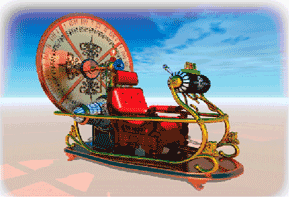Let’s begin in the 18th century, as Japan lay deep in self-imposed isolation under the Tokugawa shoguns. Traditional architecture and gardens flourished, from Kyoto to mountain villages. Shrines and temples, aristocratic mansions and thatched-roof farmhouses, pagodas and tea-houses abounded across Japan. They are preserved today at Sankeien Garden, one of Japan’s finest collections of traditional buildings, clustered around a pond in an unparalleled jewel of natural beauty.
A short taxi ride will bring you to the 19th century, after Commodore Perry’s Black-ships had pried open Japan, when Yokohama was a treaty port and the entry point for every innovation from the West. Iron bridges and trains, ice cream and beer, roast beef and top hats, baseball and Christianity: a flood of new ideas poured into Yokohama, leaving their mark on the Bluff of Yamate-cho, where the European and American merchants built their fine homes, churches, and schools. Stroll along the leafy streets and imagine when the telegraph was the Internet of its day and Yokohama’s silk exports funded the modernization of Japan. Traces can still be found at the Foreign Cemetery, the Catholic and Anglican churches, and Saint Maur International School, all with their roots in the 19th century.
The 20th century harkens down the hill in Chinatown and Yamashita Park. The 1923 Earthquake flattened the city but created this seaside park, perfect for strolling along the water’s edge and pretending that those boats in the harbor are sailing off across the Pacific—or arriving from China, bringing the industrious immigrants who built Japan’s largest community of Chinese and their colorful restaurants, shops, and temples. The illusion is enhanced as you gaze up at the Marine Tower, the world’s tallest lighthouse, or enter the stately lobby of the New Grand Hotel, where General MacArthur pondered the postwar Occupation.
Proceed to the 21st century in the Harbor of the Future—Minato Mirai, a cutting-edge congregation of high-tech buildings and serious shopping, all built on land reclaimed from the Bay and a former shipyard. The area boasts a futuristic energy and waste-disposal system that is a model of innovation, a brand-new subway that has won design awards, and Landmark Tower: at 75 floors, it’s Japan’s tallest building, perched on rolling foundations to absorb seismic shocks.
When you’re ready to return to Tokyo, the train from Minato Mirai will speed you to Shibuya in only 35 minutes. But Yokohama is always ready to welcome you back for another trip!

